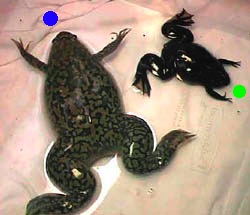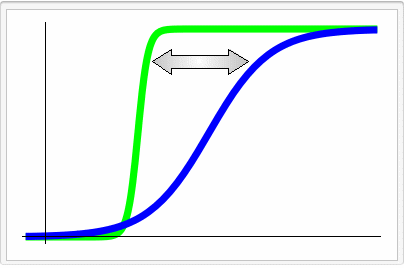 |
Below we show numbered developmental stages from the normal table. On the left two female frogs (X. laevis and X. tropicalis) are shows labeled by the blue and green dots, respectively. On the right we illustrate "heterochrony" - a transcriptional shift across species. The abscissa shows developmental stage, the ordinate shows normalized mRNA abundance in log(10) scale. This data is provided as a supplementary material for the paper "Mapping gene expression in two Xenopus species: evolutionary constraints and developmental flexibility."
Yanai I, Peshkin L, Jorgensen P, and Kirschner MW. Developmental Cell. 2011 Apr 19;20(4):483-96.
, 2011. Morphological changes among species arise in large part by modifications in gene regulation throughout the development of the organism, however little is known regarding the propensity for variation in gene regulation as a function of developmental time. There is MATLAB viewer and complete dataset encoded for MATLAB, please request from Leon Peshkin (peshkin at gmail.com)
|
 |
| Try our favorite genes:
Conserved
17290 - Chordin
11272 - BMP7
715 - HOXA1
17016 - ZAR1
Convergence
18095 - GREM1
20007 - PARS2
Heterometry
1856 - GLI3
15485 - MYC
Heterochrony
3737 - CPN1
25857 - CHST9
Maternal/Zygotic
shift
25345 - KRT12
25052 - KRT19
| Enter the suffix of ENSXETG:

|
To find ENS gene ID: To find ID for your favorite gene in our species of reference - X. tropicalis you should begin by searching the Ensembl. Alas, frog annotations are far from perfect, so you might have to go as low as taking a sequence and BLAST-ing it at Enslemb server against X. tropicalis, selecting the right hit and taking the last significant digits from its ID. For example ENSXETG00000014526 becomes 14526, ENSXETG00000001070 becomes 1070, etc. An alternative resource is Uniprot, which often provides pre-computed Ensembl homologues (search term organism:"Xenopus tropicalis [8364]"). Note that we do not have data for some genes, entering such missing gene ID will result in nothing displayed. |